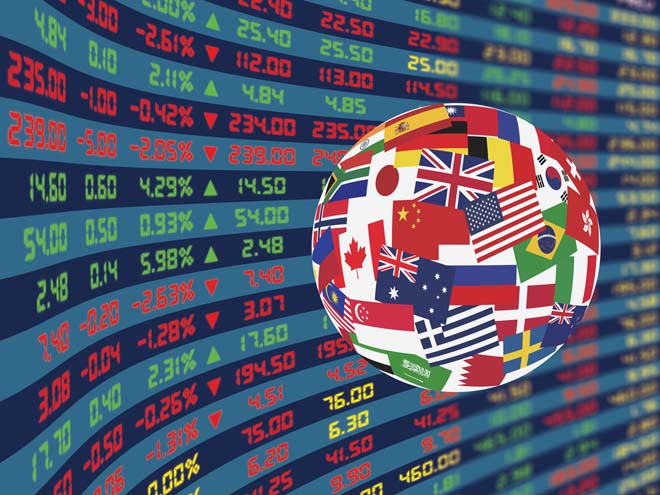The FX market is the world’s most traded market, with an average turnover of more than US$5.3 trillion per day. Forex trading is essentially buying one currency while selling another. Currency values rise and fall against each other due to important factors such as economic stability and geopolitics. The goal of forex traders is to profit from these changes in the value of one currency against another by actively speculating on which way forex prices are likely to turn in the future.
The currency exchange rate is the rate at which one currency can be exchanged for another. It is always quoted in pairs like the EUR/USD (the Euro and the US Dollar). Exchange rates fluctuate based on economic factors like inflation, industrial production and geopolitical events. These factors will influence whether you buy or sell a currency pair.
What affects forex values?
Forex prices are determined by various factors, ranging from international trade or investment flows to economic or political conditions. Interest rates, central bank policies, time of the day, preferences and anticipations of the market players, and other factors, the rates, of currencies keep in fluctuation. Your primary task as a trader is to speculate the trend of the rate and buy an appreciating currency or sell a depreciating one, and then take your profits through execution of a reverse transaction.
Liquidity
The Forex market revolves around eight major currencies. The enormous volume of daily trades of these eight currency pairs makes it the most liquid market in the world, which means that under normal market conditions you can buy and sell currency as you please.
Margin
Foreign exchange is a margined product, which means that you are only required to invest a small percentage of the full value of your position to place a forex trade. This means that the potential for profit, or loss, from an initial capital outlay is significantly higher than in traditional trading.
24-Hour Forex Activity
The foreign exchange market is the biggest financial market in the world. One of the key elements behind forex’s popularity is the fact that forex markets are open 24-hours a day from Sunday evening through to Friday night. Trading follows the clock, opening on Monday morning in Wellington, New Zealand, progressing to Asian trade spearheaded out of Tokyo and Singapore, before moving to London and closing on Friday evening in New York.
Value
The value of forex is quoted in terms of one currency versus another. Each currency pair has a ‘base’ currency and a ‘counter’ currency. The base currency is the currency on the left of the currency pair and the counter currency is on the right.
For example, in EUR/USD, EUR is the ‘base’ currency and USD the ‘counter’ currency. Forex price movements are triggered by currencies either appreciating in value (strengthening) or depreciating in value (weakening). If the price of EUR/USD for example was to fall, this would indicate that the counter currency (US dollars) was appreciating, whilst the base currency (Euros) was depreciating.
When trading forex prices, you would buy a currency pair if you believed that the base currency will strengthen against the counter currency. Alternatively, you would sell a currency pair if you believed that the base currency will weaken in value against the counter currency. Some examples of major currency pairs are:
- EUR/USD (The value of 1 EUR expressed in US dollars)
- USD/CHF (The value of 1 USD expressed in Swiss francs)

Example of a Forex Trade
Let’s say a news story has led you to believe that sterling will rise against the Australian dollar.
- Investor chooses a broker and opens an account with $500
- Learns and practice using Demo account and other educational tools.
- After practicing opened a position of 65K EURUSD at 1.0850 on 27.4. 2015 and closed it on 1.5.2015 at 1.1250
- Profit $2600 Leverage 1: 146.25
What is CFD Trading?
By trading forex as a Contract for Difference (CFD), you are able to obtain exposure to the markets at a fraction of the cost of owning the underlying currencies.
CFD trading allows the market trader to take a position on the future value of an asset whether the market trader thinks it will go up or down. The idea is that you agree to exchange the difference in value of a particular currency pair between the time you open your position and the time you close it.
Just as in conventional forex trading, with a forex CFD the principle is that you buy one currency while simultaneously selling another. So you might decide to buy sterling (GBP) while selling the US dollar (USD) as a CFD. This would be an example of opening a long position on the forex pair GBP/USD.
